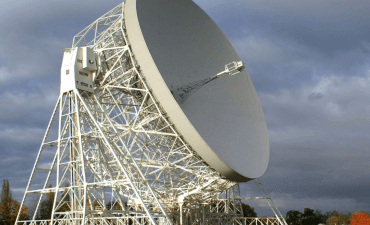The biggest Big Data project in the universe
- by 7wData

The biggest amount of data ever gathered and processed passing through the UK, for scientists and SMBs to slice, dice, and turn into innovations and insights. When Big Data becomes Super-Massive Data.
Fifty-five years ago today, humanity left Earth for the first time, as cosmonaut Yuri Gagarin became the first man in space. Since then, we’ve gathered more data about the universe than in all of human history combined, via technology in space and on the ground.
Cosmological data is Big Data, the biggest there is. And one organization knows more about planning for Big Data, and how to process it when it arrives, than any other enterprise – private or public sector – on the planet. So much so, that we may need to coin a more appropriate phrase for what they gather in the decades to come – Super-Massive Data.
The Square Kilometre Array (SKA) Project is the biggest science project on or off Earth. It involves the building over the next two decades of a series of giant arrays of radio telescopes in remote parts of australia and southern Africa, to create a globe-spanning dish, in effect, with a surface area over 200 times larger than that of the Lovell Telescope at Jodrell Bank.
This UK-centered international programme – headquartered at Jodrell Bank – is designed to understand aspects of fundamental physics on a universal scale, such as gravity and magnetism, all the way out to more traditional astronomy topics, such as supermassive black holes, the origins and evolution of the universe, and the nature of dark matter and dark energy.
Professor Philip Diamond is Director General of the SKA Organisation. He explains:
In many ways, you can think of the SKA as a time machine, as we will be able to look back in time and make movies of the evolving universe. We’ve recently published our science case. It comes in two volumes, totalling 2,000 pages, and when dropped on a minister’s desk, the nine kilograms make a resounding thump – which is the principal aim of the printed copy! I haven’t mentioned SETI [the Search for Extraterrestrial Intelligence], but we will be the ultimate SETI machine, too. It’s not one of our main aims, it will be a byproduct, but if we do detect that little signal then I think that would address some of the funding issues we might have.
The UK has committed £200 million to SKA to date, and the Australian government A$300 million, but over the next few years the project will need billions of dollars of investment, the case for which the SKA Organisation is building. Currently it is a UK Limited Company, but will eventually become a treaty organization and inter-governmental project, similar to CERN.
Using the most common element in the universe, neutral hydrogen, as a tracer, the SKA will be able to follow the trail all the way back to the cosmic dawn, a few hundred thousand years after the Big Bang.
But over billions of years (a beam of light travelling at 671 million miles an hour would take 46.5 billion years to reach the edge of the observable universe) the wavelength of those ancient hydrogen signatures becomes stretched via the doppler effect, until it falls into the same range as the radiation emitted by mobile phones, aircraft, FM radio, and digital TV. This is why the SKA arrays are being built in remote, sparsely populated regions, says Diamond:
Eventually there will be two SKA telescopes. The first, consisting of 130,000 2m dipole low-frequency antennae, is being built in the Shire of Murchison, a remote region about 800km north of Perth, australia – an area the size of the Netherlands, but with a population of less than 100 people. Construction kicks off in 2018.
[Social9_Share class=”s9-widget-wrapper”]
Upcoming Events
Shift Difficult Problems Left with Graph Analysis on Streaming Data
29 April 2024
12 PM ET – 1 PM ET
Read MoreCategories
Tags
You Might Be Interested In
How AI in Video Will Enhance Work in the Modern-Day Work Environment
16 Sep, 2021Shaking off the dust from what could be described as the longest year known to man — remote work is …
A fast data architecture whizzes by traditional data management tools
22 Nov, 2016How corporations use big data will literally be the difference between business success or business failure. Now, the fast data …
Explaining Data Fabrics to the CEOs: How and Why
30 Dec, 2021A “fabric” is defined as “a cloth made by weaving, knitting, or felting fibers,” according to dictionary.com. Alternate definitions include …
Recent Jobs
Do You Want to Share Your Story?
Bring your insights on Data, Visualization, Innovation or Business Agility to our community. Let them learn from your experience.
Privacy Overview
Get the 3 STEPS
To Drive Analytics Adoption
And manage change




